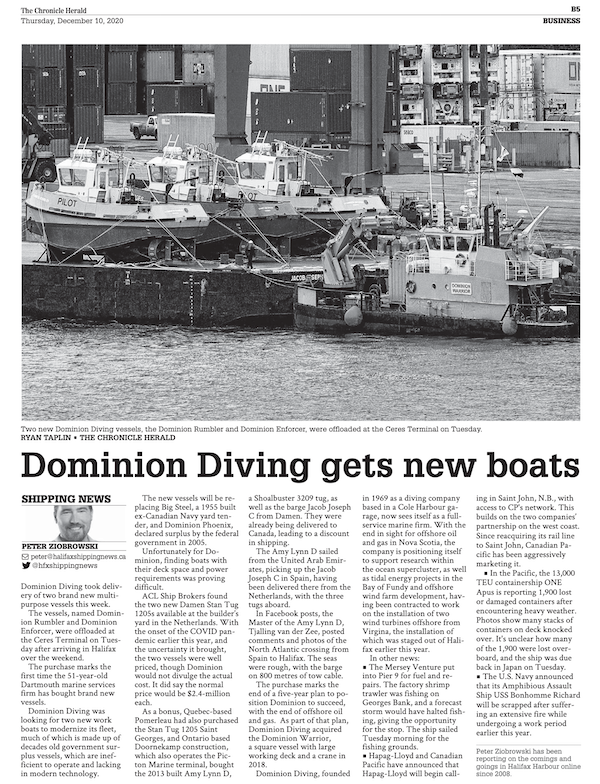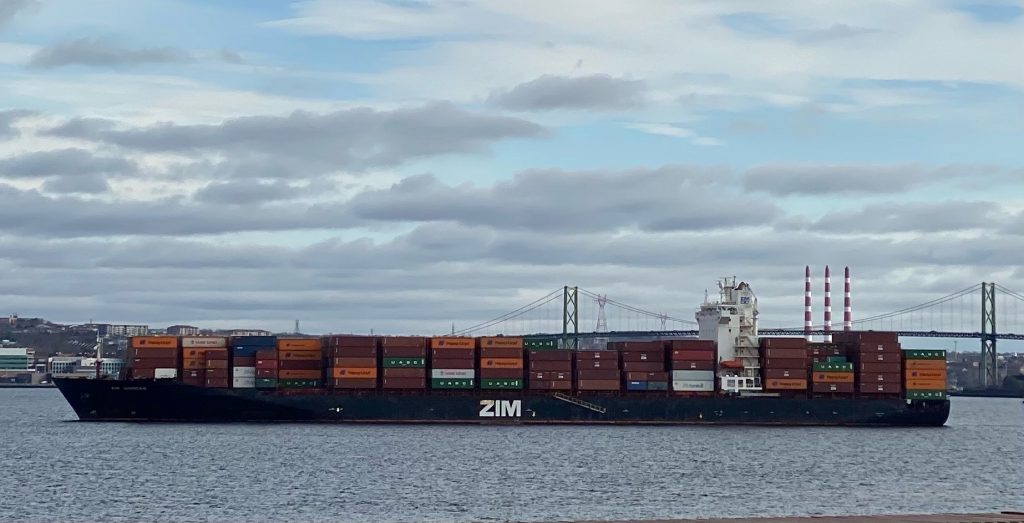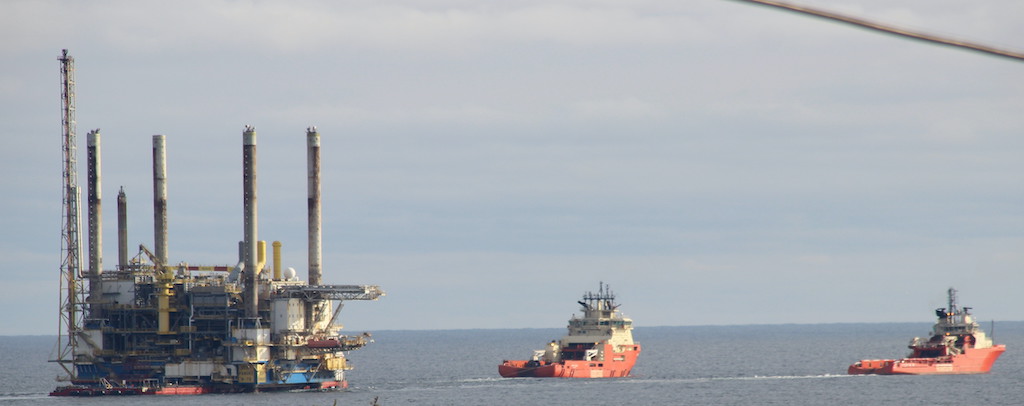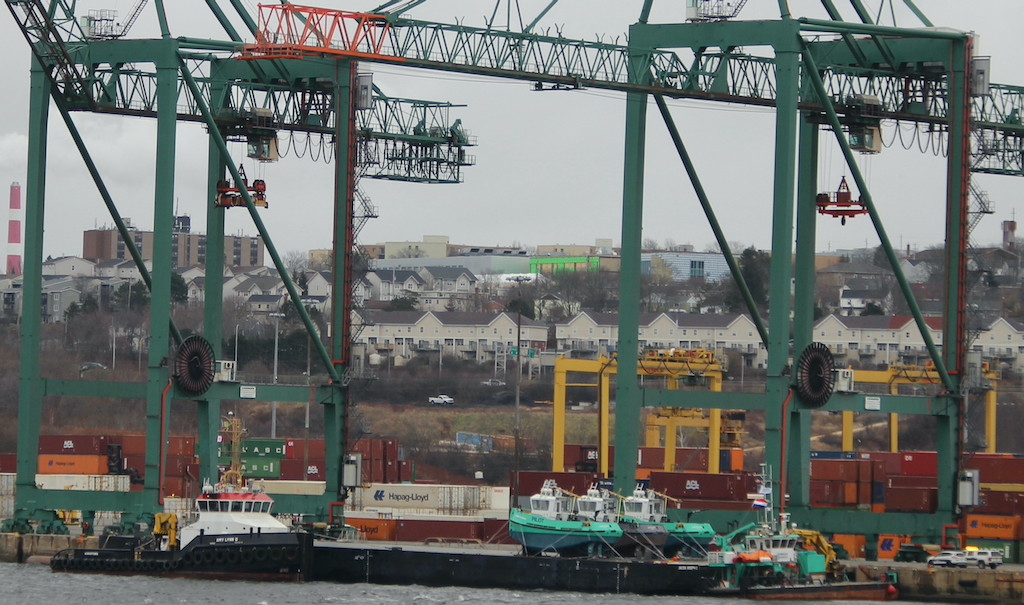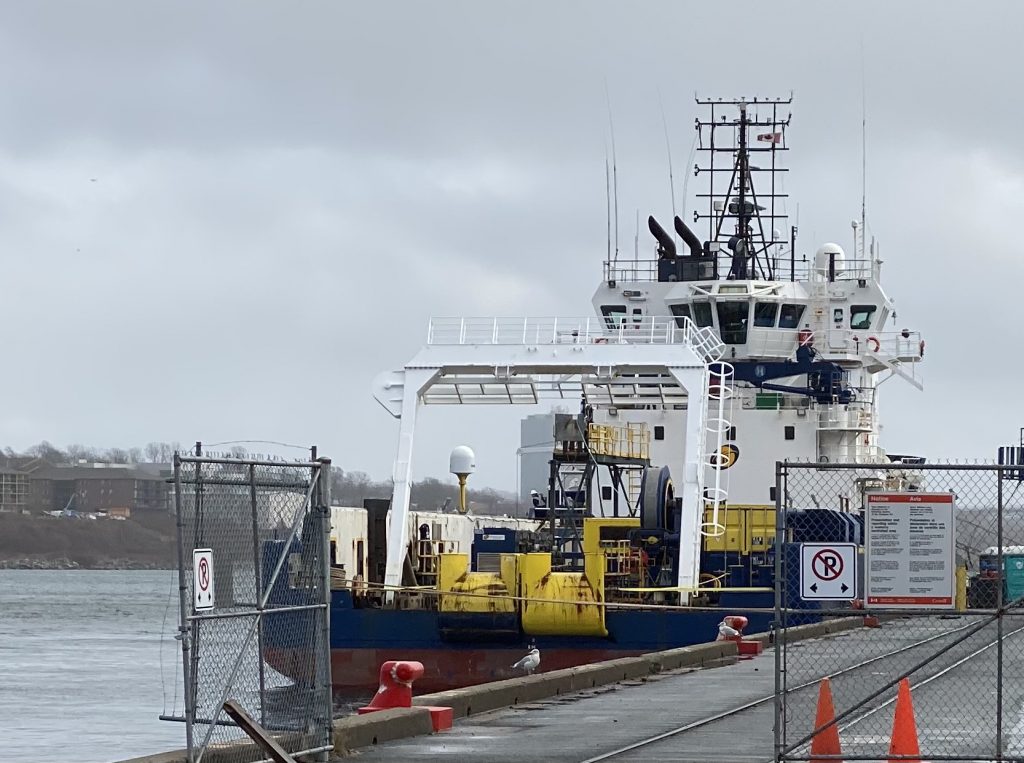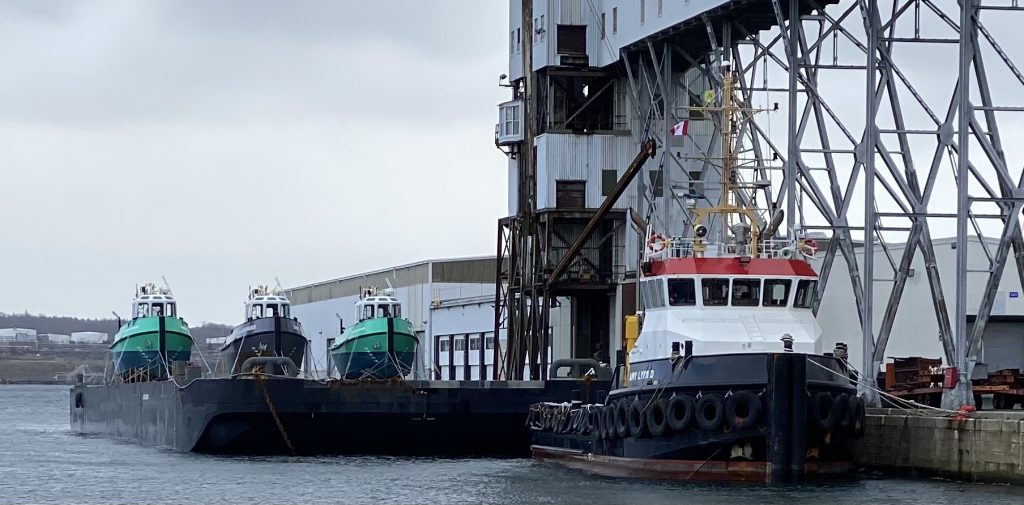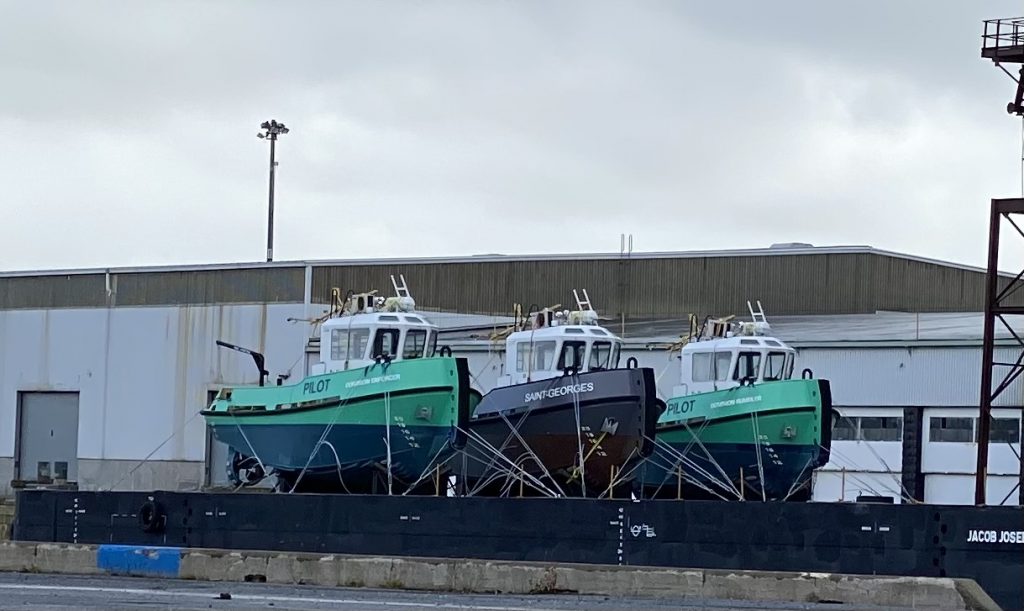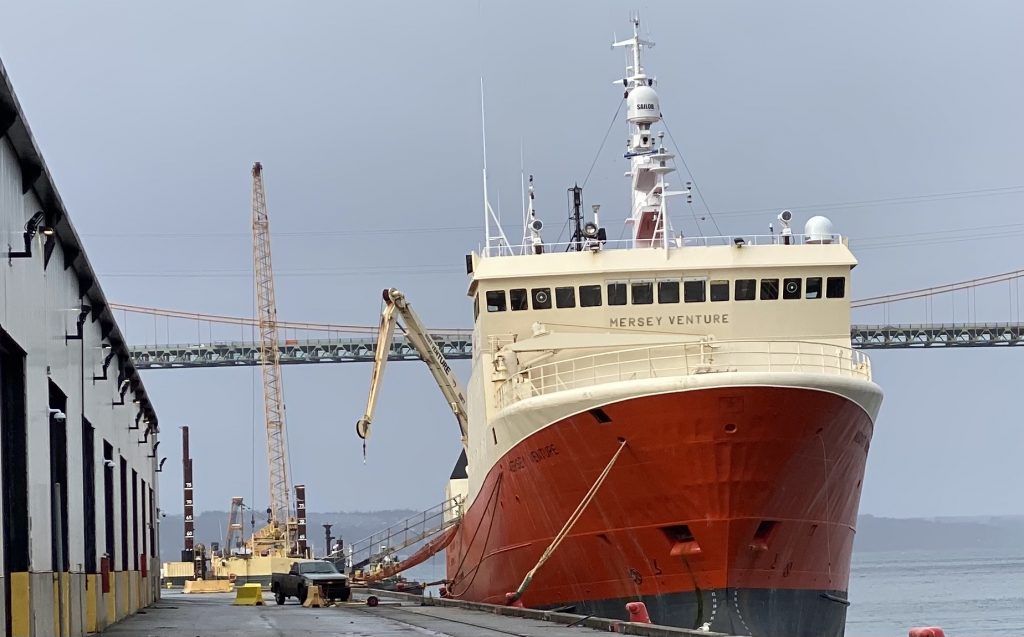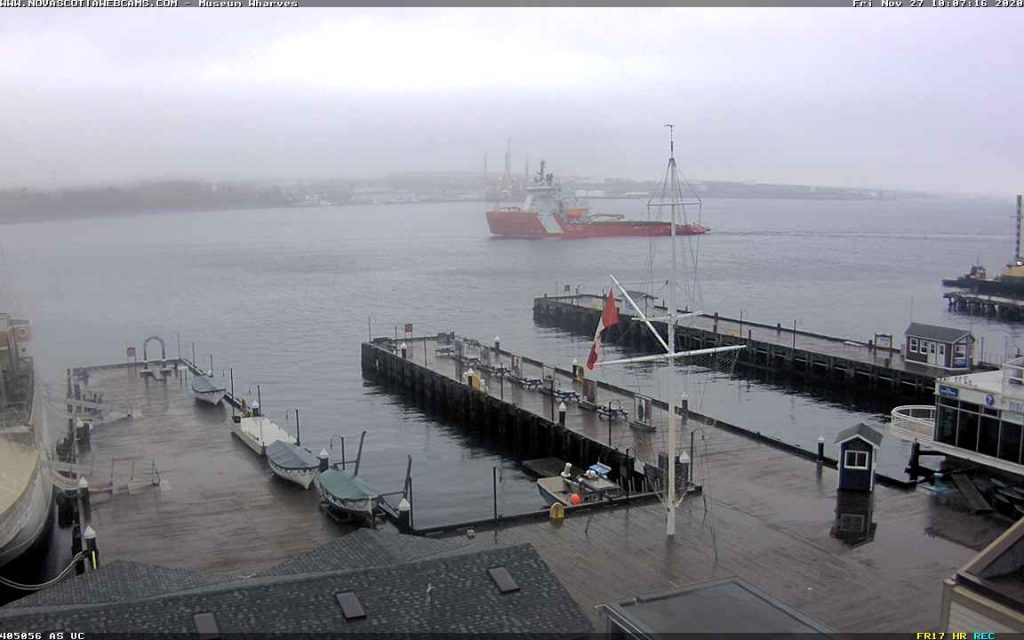I have been told that the Deep Panuke platform, Bound for sheet harbour to be recycled on board the Boa Barge 34, have hit bottom outside sheet harbour.

Marine traffic shows a number of tugs working in the area. The chart shows several shallower areas, that could cause problems for the tow. Weather shows a Gale warning, with 3-4m seas forecast tomorrow, with winds of 40knots.
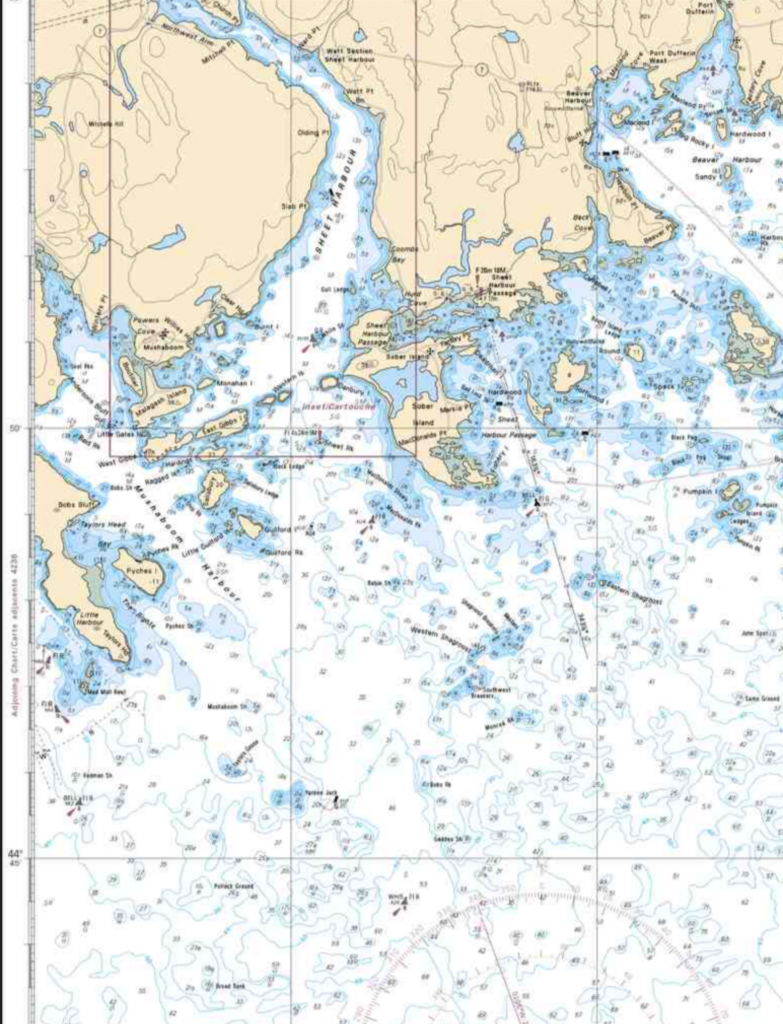
More to Follow.
UPDATE: Atlantic Hemlock looks to have sailed to Assist.
UPDATE Dec 15 1000: it looks like the platform was unstuck on this mornings high tide, and is now moving into Sheet harbour.
UPDATE Dec 16: There was speculation that the platform may have hit bottom again, however Deep Panuke is now against the dock in Sheet harbour. tugs Atlantic Larch, Atlantic Elm, Atlantic Hemlock and Point Chubucto were involved in the move. A crew member on board the Larch reported via Facebook post, that there was no bottom contact today, but the entry into the Harbour required waiting on a couple tide changes.

